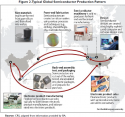Posted On Thursday, 23 May 2019
Shipbuilders are studying how to add additional combat power, through combat upgrades or additional combat systems, to the U.S. Navy's Littoral Combat Ships (LCS).
Senior executives from Lockheed Martin, builder of the Freedom variant LCS told USNI News that they have been working since 2017 on a two-phase plan to add greater “lethality” to the two LCS designs – the Independence-class, a traditional mono-hull built by Austal USA, and the trimaran-hulled Freedom-class.
The first phase is adding the Naval Strike Missile, a subsonic anti-ship missile with a 100 nautical mile range, the Nulka decoy system help defend against advanced adversary anti-ship missiles, an improved electronic warfare suite, upgraded fire control systems for the ship’s 57-millimetre main gun, and possible radar upgrades.
The second phase is examining adding laser systems and vertical launch systems that could fire a range of weapons. Both an eight-cell vertical launch system and single-cell bolt-on systems are under consideration.
The U.S. Navy has been trying to “up-gun” the LCS design for years, acknowledging that the ships offered too little combat utility for their size. Without additional weapons, the LCS would be unable to contribute to combat operations against a peer navy like China’s, and could even become a liability that would need more formidable ships like destroyers to help defend them.
Even with these upgrades, the LCS would still lack the capacity of the PLA Navy’s Type 054 frigates. To get greater combat capacity and capability, the U.S. Navy recognized that it needed a larger, frigate-sized ship. The future frigates are envisioned to have 32 vertical launch cells, carry either four or eight long-range anti-ship missiles, and have potent anti-submarine capabilities. After selecting five designs to compete last year, bids are being solicited this year for plans to build 20 frigates. The Navy wants to award a contract to build the new ships in 2020, with the first hull to be delivered in 2026.





